The history of goliath grouper records
Early catches and record holders
The saga of the goliath grouper's world records dates back to the early 20th century, when anglers first began documenting their catches. One of the initial record setters was set by Paul Hartman in 1961. This monstrous catch from Fernandina Beach, Florida, weighed in at a staggering 680 pounds, establishing a benchmark that would be tough to beat.The 680-pound milestone
Hartman's catch was a monumental moment, but the goliath grouper world record didn’t stop there. The 680-pound monster caught by Hartman stood for years, making it a topic of conversation among sportfishing circles globally. This goliath was large enough to draw attention from the International Game Fish Association (IGFA), which officially documented the catch. The significance of this catch was more than just the numbers on the scale. It was a testament to the rich and unique ecosystem found along Florida’s Atlantic coast. The popularity of goliath groupers soared, enticing professional and amateur anglers alike to try their luck in waters known to produce record-breaking fish.Lynn joyner's unforgettable catch
Another noteworthy name in the annals of goliath grouper fishing is Lynn Joyner. In 1969, Joyner made headlines with a massive goliath grouper catch off Marco Island in the Gulf of Mexico. While not surpassing Hartman’s record, Joyner's catch was impressive enough to validate the Gulf as a prime location for these giant groupers. The sheer size of these catches captivated public interest and popularized goliath grouper fishing. As a result, Florida became the go-to destination for those hoping to land a grouper that would rival the legendary catches of Hartman and Joyner.Betsy walker's women’s record
Betsy Walker holds a special place in goliath grouper history for setting the women's world record. Her record catch, also off the coast of Florida, has inspired countless female anglers. Walker’s catch was spotlighted not only for its size but also for breaking barriers in a predominantly male sport. Walker’s catch is particularly inspiring as it highlights how the sport of fishing sees no gender boundaries. Her record signifies the inclusive nature of goliath grouper fishing, encouraging more women to engage in and contribute to the sport.Pioneers and modern record holders
As we move into the present day, the names and stories continue with anglers like Reegan Werner and more. These pioneers of the past have set the groundwork for today's modern record holders, pushing the boundaries and redefining what it means to catch a ‘monster’ fish. For more captivating stories about record-breaking catches, check out the biggest tarpon ever caught at this link.The biggest goliath grouper ever caught
A goliath among goliaths
In the fishing community, every story of a massive catch feeds the passion for the sport. But some tales are so legendary they become part of the lore. One such tale is the world record goliath grouper catch, an event that has kept the fishing world buzzing for years. We're talking about the monumental, almost unfathomable record set by a goliath grouper weighing a stunning 680 pounds.
It happened in a place famous for its rich marine life, the waters around Fernandina Beach, Florida. On May 20, 1961, Lynn Joyner etched his name into history books by landing this gigantic fish. Recognized by the International Game Fish Association (IGFA) as the world record for the largest goliath grouper ever caught, this record still stands undisturbed. Imagine the sheer scale of that fight!
And yes, just in case you were wondering, lynn joyner's record-setting catch is far from a solitary wonder. The waters around Florida, stretching into the Gulf of Mexico and the Atlantic, are fertile grounds where big stories seem to happen more often than not. This region has seen numerous remarkable goliath groupers, but none as majestic as Joyner's 680-pound colossus.
The fight of a lifetime
Capturing a goliath grouper of such proportions isn’t a straightforward affair. It's a battle of wills, skill, and perhaps a bit of luck. Every angler dreams of such an encounter, where their expertise and patience are put to the ultimate test. To land a goliath, anglers often employ sturdy fishing rods complemented by heavy tackle. Live baitfish, like mackerel or blue runners, are commonly used to lure these giants from their rocky lairs.
Interestingly, the fight to reel in a record-breaking goliath often involves grueling hours of tug-of-war. Reports suggest joyner may have fought the 680-pound behemoth for over an hour, an intense duel leveraging both angler and fish to their physical limits.
Modern-day giants
While lynn joyner's world record remains unbroken, recent catches have come tantalizingly close. For example, reegan werner famously caught a 563-pound goliath grouper off Marco Island, Florida, marking one of the closest contenders to Joyner's achievement. This remarkable capture was another testament to Florida's waters being a hotspot for goliaths.
In modern times, anglers continue to share their monumental catches on social media, with instagram post shared frequently documenting these behemoth groupers. Each giant catch keeps the legend of the goliath grouper alive and thriving within the fishing community, as anglers worldwide marvel at these remarkable feats.
Techniques for catching goliath groupers
Mastering the art of catching goliath groupers
There's something electrifying about the challenge and reward of catching a goliath grouper. These behemoths, known for their sheer size and strength, have garnered attention from anglers worldwide. Whether you're an experienced fisherman or an enthusiastic newbie, understanding the techniques for catching these giants can make all the difference. Here’s a detailed look at some key techniques.
Using the right tackle
When targeting goliath groupers, your equipment plays a crucial role. They are, without a doubt, some of the toughest fish in the ocean. Reegan Werner, a seasoned grouper angler, emphasizes, “Heavy-duty bottom fishing tackle is essential. You can't skimp on quality when dealing with these giants.” Typically, anglers use a heavy rod and reel combination capable of holding 80-130lb braid line. Bait must also be substantial – live bait like large pinfish or blue runners often work well.
Preferred fishing spots and techniques
Goliath groupers love structure. Shipwrecks, reefs, and rocky areas in the Atlantic and the Gulf of Mexico are prime spots. Paul Hartman, a renowned angler from Minnesota, shares, “Deep sea fishing near shipwrecks offers the best chances. These fish like to lurk in and around these structures.” Once you spot a likely location, drop your bait straight down and prepare for a brute force struggle.
Hooking and fighting goliath groupers
The initial hook engagement, or ‘the strike,’ is just the beginning. When you feel a goliath grouper bite, set the hook with a strong, firm action. From here, it becomes a test of endurance and strength. Betsy Walker, an IGFA representative, notes, “You almost need to fight them like you would with a shark. Use your body weight and leverage to tire them out.” Anglers can spend up to an hour or more in a face-off before successfully landing one.
Seasonal considerations and timing
Though you can target goliath groupers year-round, certain times are more productive. The summer months, especially June through September, often provide the best action. For more detailed insights on the best times to fish, check out our comprehensive guide on maximizing your catch.
Conservation matters
Remember, while the thrill of catching a goliath grouper is undeniable, these magnificent creatures are a protected species. Always practice sustainable fishing by following local regulations and guidelines. In Florida, catch and release is mandatory for goliath groupers to preserve their population for future generations.
With these tips in mind, you are well-prepared to embark on a challenging yet rewarding goliath grouper fishing adventure. As with any fishing expedition, preparation, respect for the environment, and patience will always yield the most fulfilling experiences. 🎣
Goliath grouper fishing hotspots
Florida’s goliath grouper hubs
Florida's extensive coastline and rich fishing heritage make it one of the best places for goliath grouper fishing. Fernandina Beach, on the state's northern Atlantic coast, is famous for its mammoth goliath groupers. Anglers like Lynn Joyner and Paul Hartman have shared tales of their giant catches from these fertile waters.
Marco Island and the Gulf of Mexico
Marco Island, located in the Gulf of Mexico, is another prime spot. Known for its warm waters and abundant baitfish, it's become a hotspot for goliath grouper enthusiasts. On Instagram, posts shared with the tags #marcoisland and #gulfofmexico often feature proud anglers with their gigantic catches, capturing the thrill and effort involved in deep sea fishing in this region.
Pioneering adventures in the Caribbean
Atlantic goliath groupers aren't just confined to U.S. waters. The Caribbean offers an incredible setting for goliath grouper fishing. Panama's coastal waters are ripe with opportunities for landing one of these giants. enthusiasts from around the world flock here, seeking the biggest fish caught offshore. Reegan Werner mentions in his comprehensive review of Panama's fish-rich waters that this is a haven for those looking to break records.
Surf and turf in Massachusetts
For those up north, Massachusetts offers an astonishing fishing scene. Coastal towns such as Farmington are buzzing with tales of record-breaking grouper catches. Betsy Walker, a seasoned angler, recalls one remarkable catch that made headlines in the local Pioneer Press. Although less stereotypical for goliath groupers than Florida or the Caribbean, the chilly Atlantic waters here have produced some of the largest groupers ever weighed.
Tales from American beaches
Other places worth mentioning include the endless beaches along the eastern seaboard. Be it Fernandina Beach or Marco Island, these coastal havens are laboriously documented on sites such as the International Game Fish Association (IGFA) database. The conservation and protection efforts put forth by these communities have ensured that these majestic species remain abundant for years to come, making the chase for the next big catch an ever-present possibility.
Conservation and protection of goliath groupers
Challenges in conserving goliath groupers
Conserving goliath groupers has been an uphill battle. Despite their massive size and impressive presence in the Atlantic Ocean, these giants are susceptible to overfishing and habitat loss. According to an International Game Fish Association (IGFA), goliath groupers were on the brink of extinction in some areas during the 1980s due to intense fishing pressure (source: IGFA). The species suffered greatly, and recovery has been a slow process.
Efforts by organizations and regulations
Efforts to protect these majestic fish took a turn for the better when the U.S. government implemented strict regulations in 1990. The American Oceans and Florida Fish and Wildlife Conservation Commission (FWC) have also played significant roles in driving conservation efforts. The FWC, for example, has established no-take regulations, meaning that harvesting goliath groupers in Florida state waters is prohibited (source: Florida Fish and Wildlife Conservation Commission).
Importance of public awareness
Public awareness has been a crucial factor in the drive to protect goliath groupers. Campaigns and documentaries have helped shine a spotlight on the issue. Reegan Werner, a marine biologist from the Gulf of Mexico Foundation, says, "The best way to ensure the future of goliath groupers is through education and responsible fishing practices."
Repopulating and monitoring efforts
Programs aimed at repopulating the species include the establishment of artificial reefs and marine protected areas. In recent years, reports have shown a gradual increase in goliath grouper populations, but the road to full recovery remains long. Technological advancements, like satellite tagging, have improved scientists' ability to monitor these fish and understand their movements better.
Ongoing research and future challenges
Continuous research is needed to fully understand the impacts of environmental changes on goliath groupers. Climate change poses new challenges, as warmer waters and ocean acidification could affect their habitats. Betsy Walker, a researcher from the Pioneer Press in Minn., shared that ongoing studies are crucial to adapting conservation strategies as new threats emerge.
Famous goliath grouper anglers
Noted goliath grouper anglers and their monumental catches
When you think of goliath grouper, the names of some famed anglers come to mind. One of them is Paul Hartman, who is a legend in the goliath grouper fishing community. Hartman, from Minnesota, holds the record for the largest goliath grouper ever caught, weighing an astounding 680 pounds. This monster was pulled out from the waters near Fernandina Beach, Florida, making Hartman an icon in the sport (source: International Game Fish Association). Another notable name is Lynn Joyner, who also had an unforgettable goliath grouper encounter in Fernandina Beach. Joyner's catch, although not a world record, weighed a whopping 583 pounds, still placing her among the top anglers for this species. Joyner's dedication to conservation also stands out, as she advocates for catch-and-release practices to help keep the goliath grouper population healthy for future generations (source: Florida Fish and Wildlife Conservation Commission). Reegan Werner, from Marco Island, Florida, is another angler who has made a mark in the goliath grouper world. Werner's experience and innovative techniques using live bait have led to numerous successful catches, contributing valuable knowledge to the fishing community (source: American Oceans). Betsy Walker from Farmington, Massachusetts, is known for her deep-sea fishing trips targeting these massive groupers in the Gulf of Mexico. Walker’s detailed Instagram posts and shared experiences have captivated and educated many aspiring anglers as she chronicles her adventures in pursuit of the mighty goliath (source: Instagram). One of the most interesting anecdotes comes from Panama’s coast, where a family on a deep-sea fishing expedition encountered a goliath that they estimated would have shattered existing records, had it been officially weighed. The group included both adults and children, showcasing how inclusive and family-friendly the sport of goliath grouper fishing can be (source: Pioneer Press).Debates and controversies surrounding famous goliath grouper anglers
While many celebrate these anglers, there are controversies too. Some critics argue that glorifying these catches may encourage overfishing of a protected species. For example, in an Instagram post shared, an angler was criticized for not following catch-and-release guidelines strictly, igniting a heated debate over the ethical aspects of sport fishing (source: Instagram). Moreover, discrepancies in reporting and verifying the exact weights of these massive groupers often lead to disputes within the fishing community. For instance, conflicting reports about the weight of a goliath grouper caught near Marco Island have raised questions about the accuracy of weighing methods and the need for standardized protocols (source: International Game Fish Association). Nevertheless, the achievements of these famous goliath grouper anglers continue to inspire many, bringing attention not only to the thrill of the sport but also to the importance of sustainable fishing practices. As the fishing community evolves, these anglers serve as both trailblazers and stewards of marine conservation, highlighting the delicate balance between sport and sustainability.Goliath grouper vs. other grouper species
Distinguishing characteristics of goliath groupers and other groupers
Comparing goliath groupers to other grouper species is like comparing giants to regular folks. Goliath groupers (Epinephelus itajara) stand out for their sheer size, often reaching up to 800 pounds. In contrast, typical groupers like the Black Grouper or the Gag Grouper rarely exceed 100 pounds.Appearance and size differences
While all groupers are robust, heavy-bodied fish, the goliath is unmistakable. Its broad head and large mouth set it apart, making other groupers seem smaller even if they aren't tiny. For example, a large red grouper might weigh around 50 pounds, which is dwarfed by an average goliath.Behavioral traits and habitat distinction
Behaviorally, goliath groupers are more solitary and can often be found lurking around shipwrecks and reefs. Whereas groupers like the Nassau Grouper tend to school more frequently. Additionally, while both goliath and other groupers can be found in similar environments, goliaths prefer deeper waters, up to 150 feet, compared to the shallow reefs frequented by other groupers. Goliath groupers are also known for their loud booming noises when threatened, unlike their quieter cousins.Diet and feeding habits
Goliath groupers have a varied diet, often feasting on crustaceans and slow-moving fish. They even eat small sharks! Other grouper species, like the Gag Grouper, tend to stick to a diet of fish, crustaceans, and cephalopods, showing a less diverse palate.Behavioral unpredictability
Another notable difference is the goliath's aggressive bouts. Fishermen recount stories of powerful tugs and surface splashes when a goliath bites. In contrast, fishing for other groupers often involves less dramatic, albeit still rigorous, battles. Exploring these differences gives a better understanding of why catching a goliath grouper is a distinct challenge. If you find the accounts of these underwater giants riveting, you might also be fascinated by record-breaking catches of other famous fish.Future of goliath grouper fishing
Evolving goliath grouper management plans
The future of goliath grouper fishing holds a blend of excitement, conservation efforts, and evolving regulations. The International Game Fish Association (IGFA) and numerous marine biologists stress the importance of responsible fishing practices targeting the majestic yet vulnerable goliath grouper. Paul Hartman, a renowned expert on big game fishing, rings in with significant insights. He says, 'To ensure that goliath groupers thrive, it’s crucial to adapt our methods and respect seasonal restrictions.'Innovation in goliath grouper fishing gear
Innovative fishing gear plays a massive role in preserving the goliath grouper. Companies like Shimano and Penn continue to develop tackle that minimizes harm. A study by the Florida Fish and Wildlife Conservation Commission (FWC) emphasizes the use of circle hooks, which drastically reduce bycatch injuries. Several local angling clubs have adopted these guidelines, hoping to set a standard for others to follow.Goliath grouper advocacy and education
Advocacy groups like the American Oceans Organization (AOO) emphasize educating anglers about the ecological impact of these giant fish. Betsy Walker of the AOO has been a vocal advocate, stating, 'Education is key. Anglers need to understand the crucial role goliath groupers play in reef ecosystems.' This education extends from beginner tours to veterans of the sport, making sure everyone is on the same page.Regulatory measures and controversies
Regulatory measures for goliath grouper fishing remain contentious, particularly in Florida. The FWC recently held a series of town hall meetings to discuss possible reopening of limited harvest seasons. Although conservationists argue for continued protection due to their critical status, some local fishers advocate for a controlled harvest to balance fish population dynamics. The debate continues, with no easy answers in sight.Success stories in conservation
On a brighter note, Marco Island serves as a successful case study in goliath grouper conservation. Through collaborative efforts among local fishermen, scientists, and policymakers, the area has seen an uptick in juvenile goliath grouper sightings. Social media, including popular Instagram threads, often share encouraging posts about recent catch-and-release success stories, driving more interest in responsible fishing practices.As we navigate the future of goliath grouper fishing, it’s clear that sustainable practices, innovation and open dialogue are key. Whether you're an avid angler or simply captivated by these colossal groupers, there’s a collective responsibility to ensure these magnificent fish thrive for generations to come.

-large-full.webp)

-large-teaser.webp)

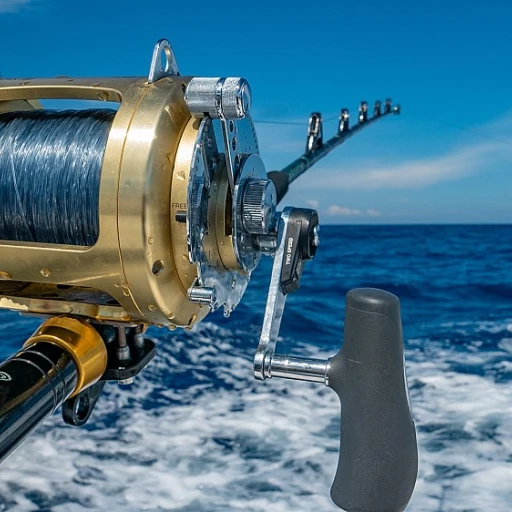
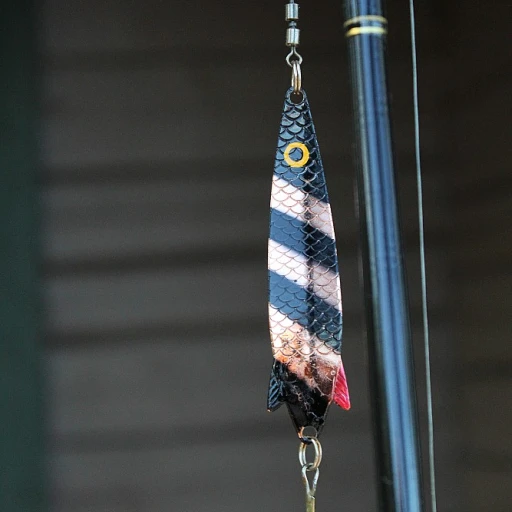

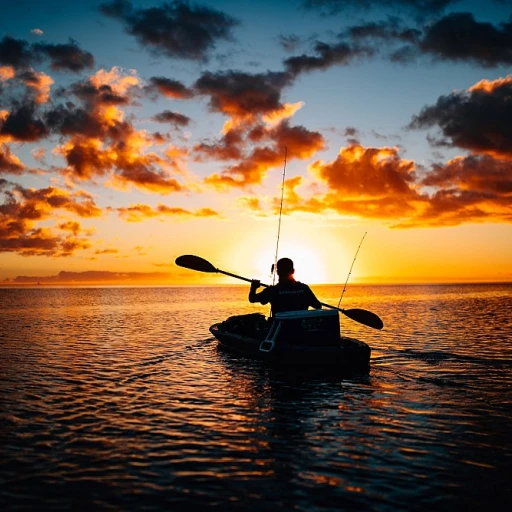
-large-teaser.webp)
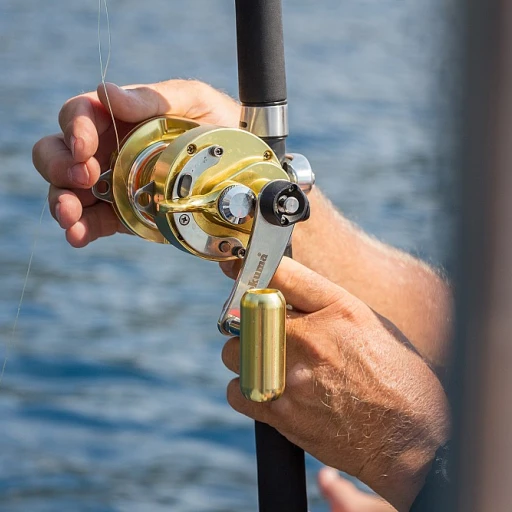
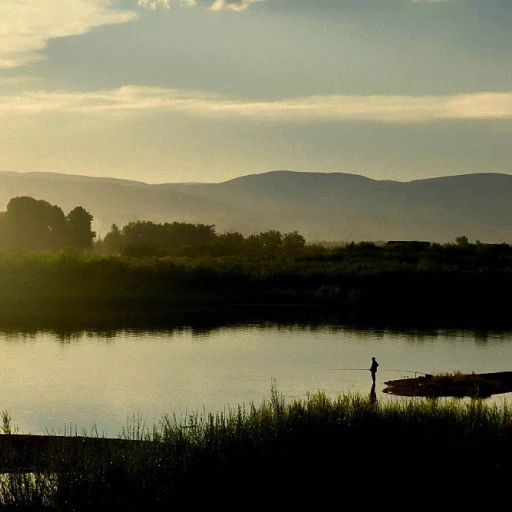
-large-teaser.webp)